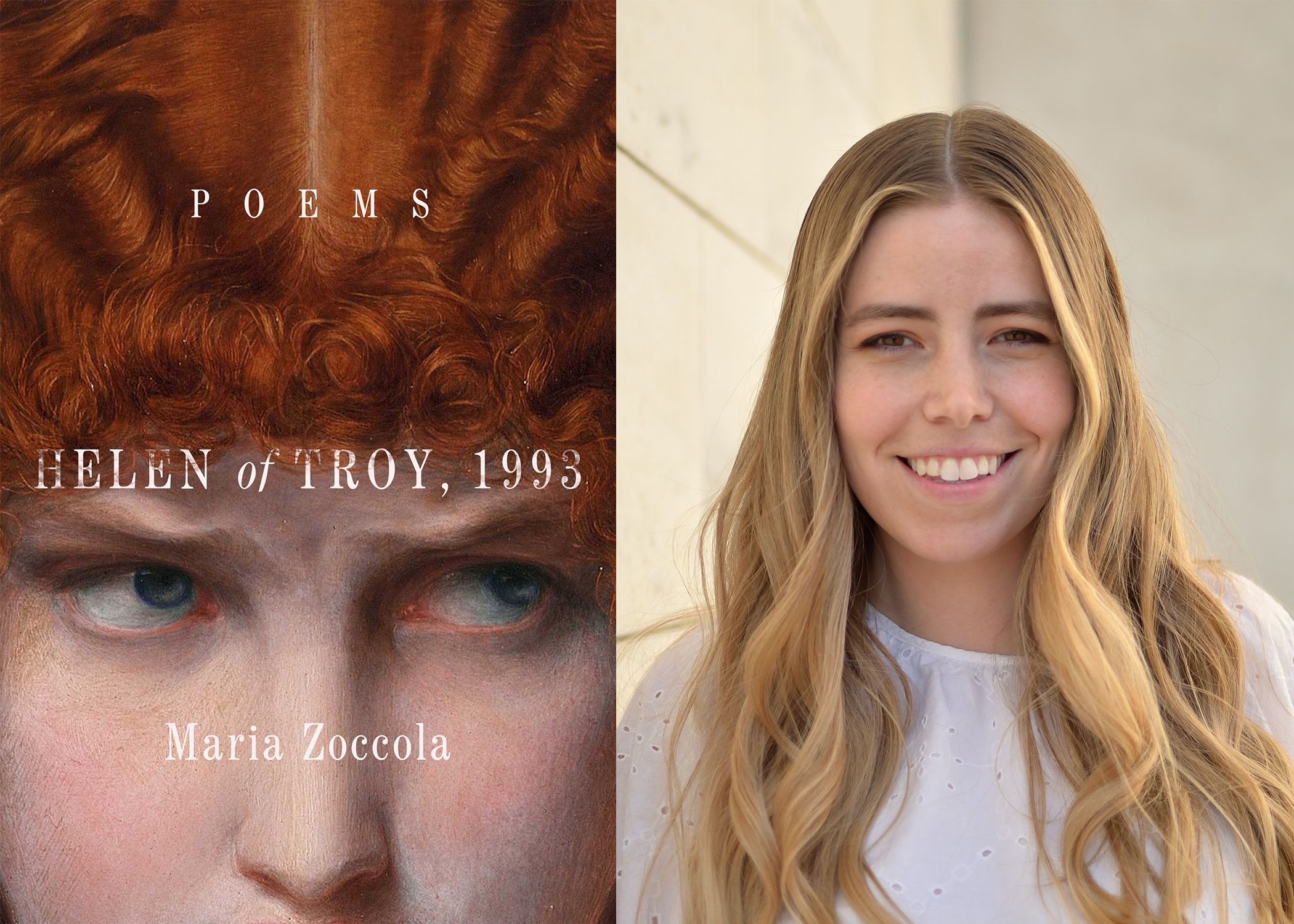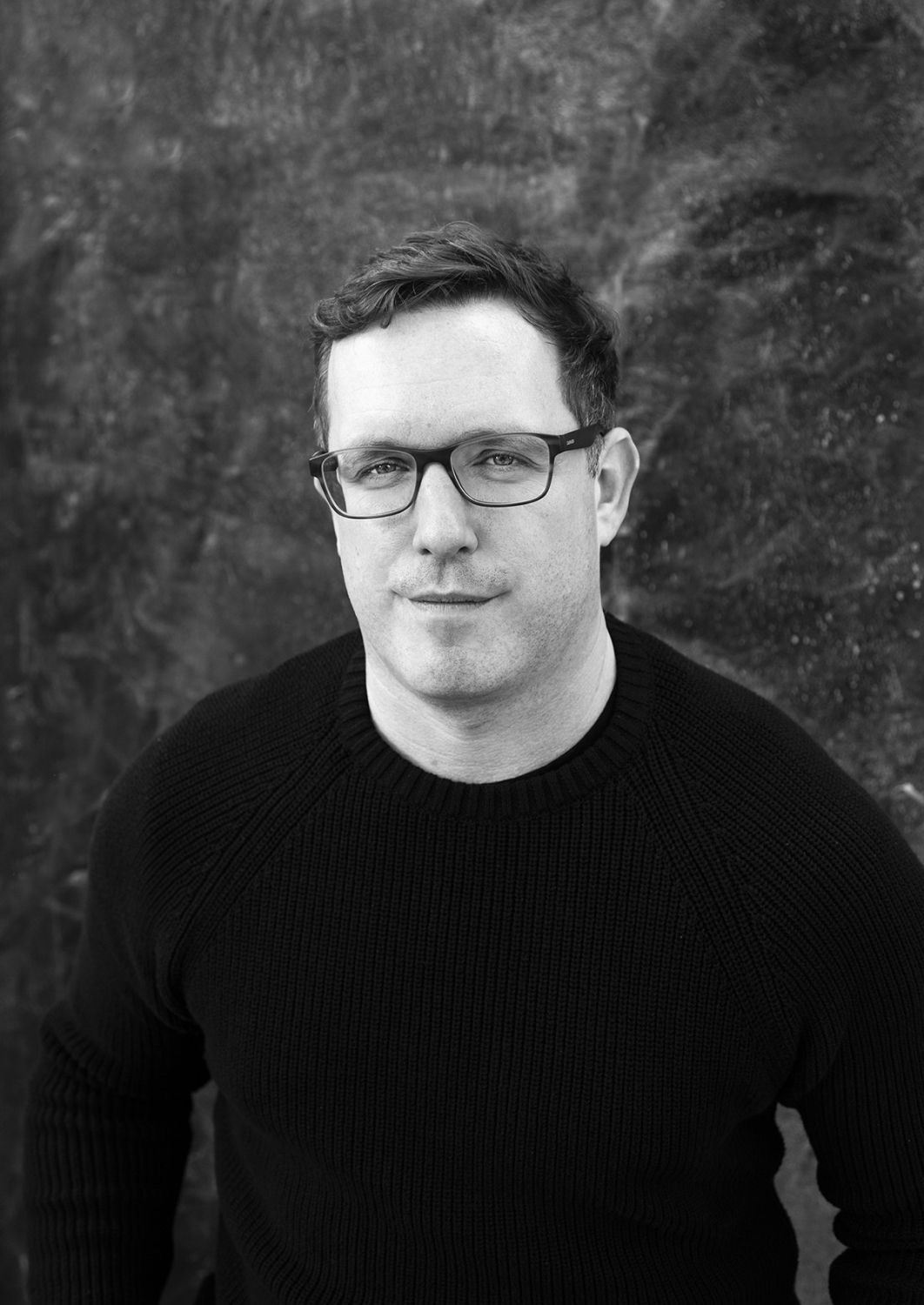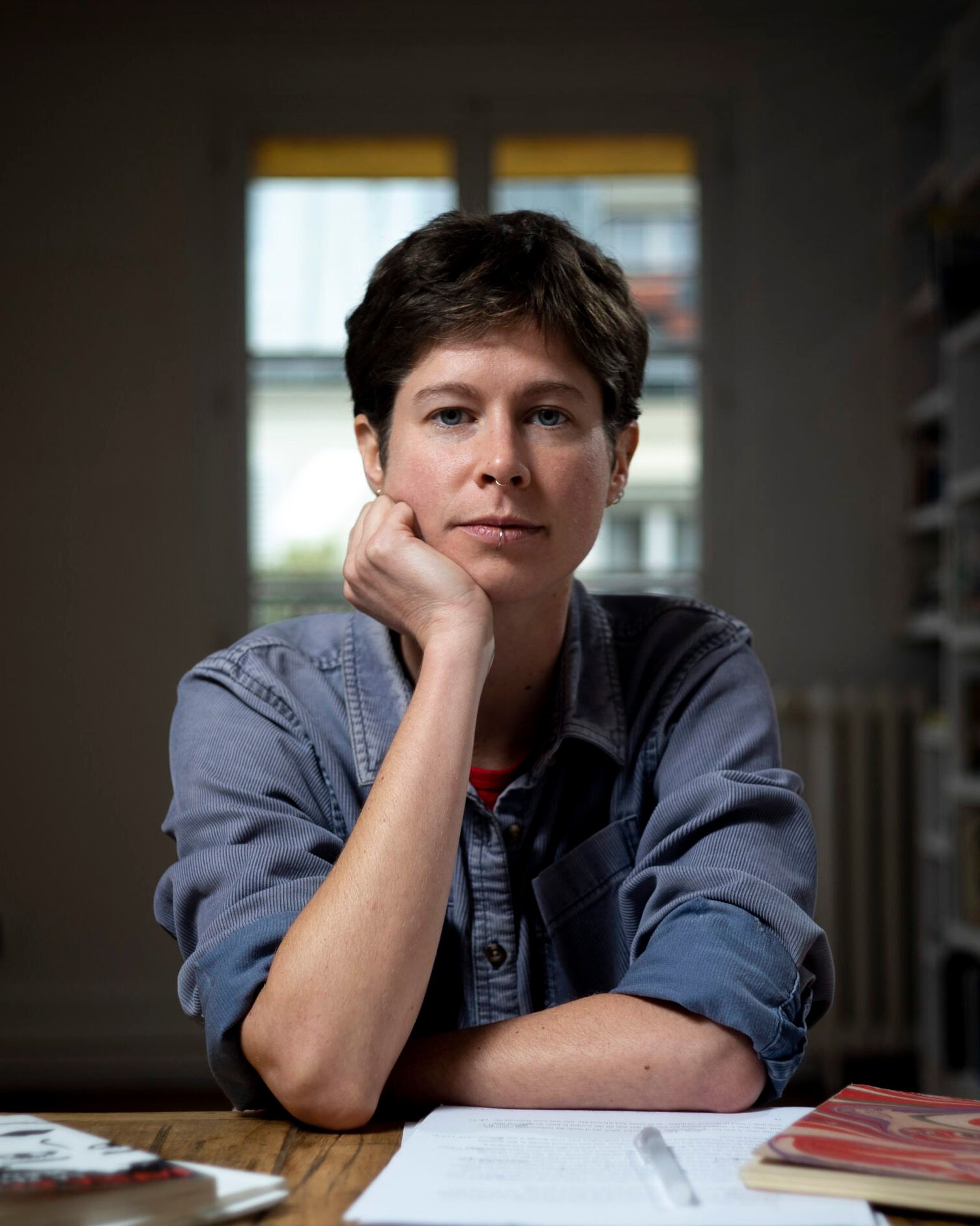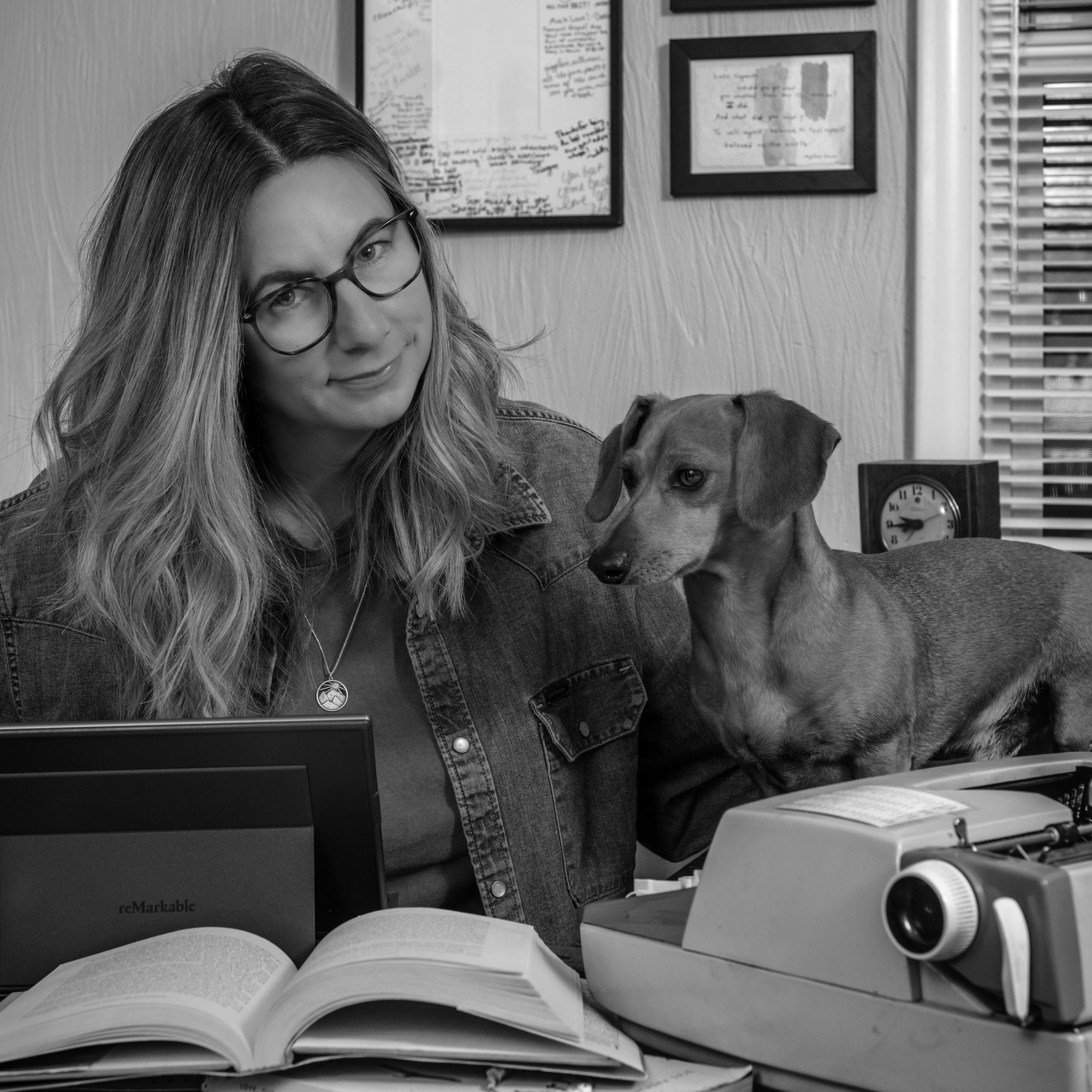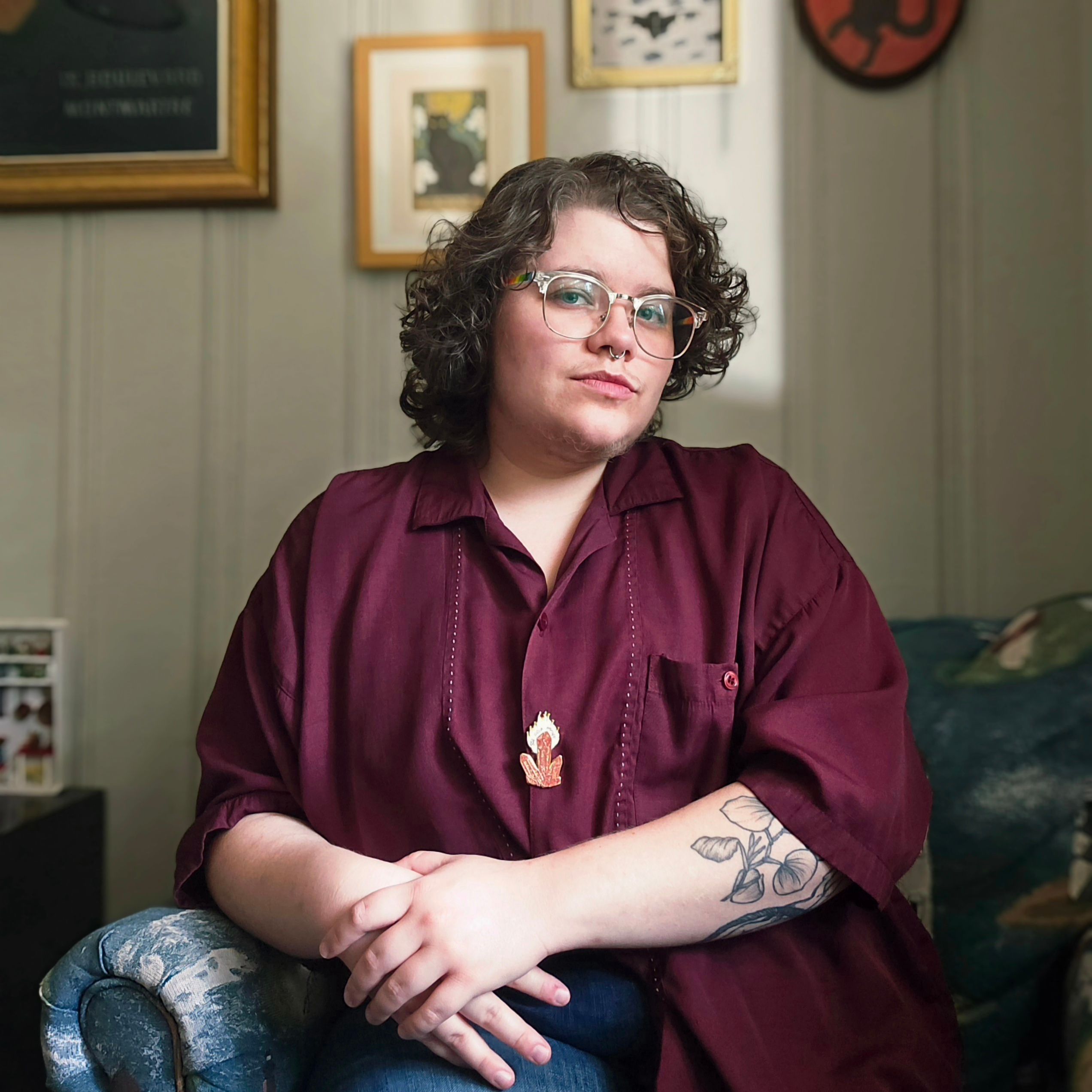Lacy Snapp: In Emily Polson's foreword for your book, she writes that you “drafted these poems on a back porch in Tennessee” with your dog Rocky at your feet. To read your collection, I did the same, although it was a front porch in East Tennessee with my dog Ruby next to me on a wrought iron bench. I felt such a connection to this collection because of how it reimagined a famous myth in a rural Tennessee landscape, that Southern culture that many only know through media depictions. Often, I think our communities can be overlooked, stereotyped for backwardness or simplicity. Can you speak about your process of giving Helen a voice to rewrite the image others have imposed on her throughout history, as well as how this book allowed for you to do the same for a location that many misunderstand?
Maria Zoccola: The funny thing about Helen as a character—well, maybe funny, maybe frustrating, maybe beautiful—is that she’s nearly impossible to nail down. And folks have sure been trying, these last several thousand years. For source material we have the Iliad, the epic poem about a war for control of Helen’s body and future in which Helen nevertheless appears only six short times. She’s given very little real estate to tell the reader/reciter/listener who she is or what her internal belief system might be; she exists, even in these earliest forms, as perhaps more of a concept than a three-dimensional woman. We’re forced to build our understanding of Helen from the opinions of the characters around her, or from other Greek and Roman writers penning Helen stories long after Homer’s Iliad, which is itself a form of slight adaptation as the written version of a poem that previously lived a long and robust life in the oral tradition, evolving in small ways as it passed from singer to singer—like Southern storytelling, in fact. Who is the real Helen? It may be impossible to say. I handed my version of Helen the microphone for the length of a poetry collection, but I think the results are no more or less legitimate than the other iterations of this woman found throughout our literature and culture and art. Helen in operas, Helen in cartoons, Helen in stage plays and perfume commercials and young adult novels. A multiplicity of Helens, and their number is growing by the day.
A multiplicity of Helens, and a multiplicity of Tennessees. Flannery O’Connor famously wrote that “almost anything you say about Southern belief can be denied in the next breath with equal propriety,” which is a quote good enough for a bumper sticker, in my opinion. The South is complex, ever-shifting, as impossible to pin down as Helen herself. There’s so much hurt here that sometimes it feels as if this land is bleeding, and at the same time there’s so much joy and love that I can see our home take flight. Perhaps some Southerners will recognize themselves and their towns in this collection, and no doubt others will find the book has nothing to do with their lives at all. But I hope folks can sense in this collection how much I treasure the South, and that when I interrogate this region’s flaws, it is only a function of that treasuring. We are already worthy despite our ugliness. We must demand better despite our beauty. We are infinitely fractured and of course already whole.
LS: This is such a complex project: the original source material vs. your reimagining of Helen, what to keep from the myth and what to reinvent. The poems themselves often traveled between worlds such as the natural (ice fishing, swan culling, cutting back kudzu), social (grocery shopping, school reunions, proms, barbeques, Chuck E. Cheese), and cultural (often seen through types of media like Jurassic Park, Madonna, surfing the net). So many of the poems even blended these threads, such as “helen of troy is asked to the spring formal.” What were some of your most exciting discoveries or rewrites of the myth in this collection, and what did you feel really adamant about keeping true to the story so many of us know? Can you tell us about the blending of these worlds, especially as your own experience growing up in Tennessee began to overlap with Helen’s new narrative?
MZ: This is a topic I could happily write about for pages upon pages, so I’ll narrow it down. In Helen of Troy, 1993, I create modern adaptations for a wide range of elements of Helen’s mythology, from Helen’s birth (still an egg, now delivered in a hospital) to her childhood rape and abduction (now a high school football player instead of Theseus), but I brooded over what to do with the Trojan War. The Trojan War itself is the crux of Helen’s significance in all of Greek and Roman mythology; it’s why her name is still with us today. The Iliad treats the push and pull of battle as a beloved red-spattered mural labored over for ten long years. The movement of generals and forces of men, aided and hindered by gods, is the work of thousands of lines of verse. The war is the Iliad, and the war is also…not Helen. Her future is tied to the clash of armies, but her present is tied to weaving behind the walls, rolling her eyes at the way her new husband has become such a disappointment, and navigating a delicate web of political concerns among the Trojan court. And likely other activities as well, although with Helen’s mere six scenes in the Iliad, how are we to know what they are?
In mapping out this collection, therefore, I pondered the best way to bring the Trojan War itself into Tennessee. Should I place the war at the center of Helen of Troy, 1993? Should I leave it out of the book entirely? Should I walk some strange, tortured middle ground? The war has everything to do with Helen as a concept, and at the same time absolutely nothing to do with Helen’s reality; it is the work of men and power and appetites and excuses. I began to wonder if the war was somehow the opposite of Helen—that is, if the war was in fact Menelaus. Through this line of thinking, the war entered Tennessee as a linguistic violence threatening the majority of pieces in the collection but also as a single actual poem: “interlude: the swan describes the war.” In this poem, my omniscient occasional-narrator, the swan, gives the reader a window into Menelaus’s bitter helplessness after Helen disappears with Paris. He’s fighting an extended battle against the wasps nesting on the front porch, raining chemical death upon them from a can, and fighting, too, against himself, against a life he suddenly does not understand. No crash of chariots and screaming horses. Just a man on a porch with WaspKill from Home Depot and an empty space where his wife should be. That’s the war in Tennessee.
LS: I noticed a juxtaposition in the book between the beautiful diction, both because of sonic qualities and the integration of wonderfully specific imagery from the natural world in Sparta, TN, and strong undertones of discontent and, ultimately, violence. Can you comment on the balancing of those in the book, or ways that they intersected? Further, how they relate to your study of Helen, your understanding and empathy of her desire for autonomy and a normal life vs. her lack of control in the myth and how she was used for deception and destruction?
MZ: Violence—yes. Violence lurks at the edges of the majority of the poems in this collection. The Iliad is easily the goriest and most violence-saturated text I have ever experienced, both in physical manifestations (spears transfixing soft palates, arrows finding eyes, etc.) and social control. I’m not sure a Trojan War retelling without violence can ever serve as a functional adaptation. Outward and obvious brutality are absent from Helen of Troy, 1993, but the violence of language remains: when Helen and Paris go out to dinner in the smoking section of a Perkins restaurant, for example, “columns of smoke rose from every table. the booth heaved / with plates of grease and blood.” The sense of danger and precarity consumes the narrative. And, too, I may have removed Helen from the warring city-states of Bronze Age Greece, but I brought her into the small towns of the American South, which are not places of peace. Helen navigates a world poised at the crossroads of honor and ferocity both in Homer and in 1993. In mythology, Helen’s body is bound by continuous control and objectification from the time she is a child raped and carried off by Theseus to her adult confinement behind the walls of Troy. In Tennessee, Helen is clawing at the walls of her own life, longing for the bricks to topple but unable to understand how that might be possible, or what her life might look like if she got her wish. Those walls are social rather than literal, and to some extent self-built, but Helen must crack their masonry herself. Does she succeed? I’m not sure. Certainly she leaves town with Paris for a time—but ultimately returns home to Sparta and Menelaus. And that ending, too, is a kind of narrative violence. Sparta and her first/final marriage are Helen’s ultimate destination in mythology, and I did not feel that altering Helen’s fate in 1993 was at all viable for the collection. I never considered allowing Helen to leave Paris and, for example, jump a plane to Hollywood to become a movie star. Like a Trojan War retelling without violence, a retelling without Sparta as the end of the line feels artificial. Dishonest. Perhaps, then, the collection must hold its own author accountable as the ultimate enactor of violence against Helen as a character. I do not allow her to escape her fate. I enforce her subjugation to it.
LS: This is a three part question: I always wonder with poetry collections, especially one like this which is a series of persona poems that follow a narrative arc, which was the first poem, the one that started it all? In another interview, you mentioned that it was like Helen’s voice started flowing through you, but I’m curious which part of her story might have been the first to reveal itself, ask to be told? Then, how did you conceptualize the collection from there? Finally, which were the hardest poems to write, or the last ones to emerge to make the collection complete?
MZ: The first page I filled with Helen’s voice in my notebook would eventually grow into two very tonally distinct poems: “helen of troy’s new whirlpool washing machine” and “helen of troy cleans up after the barbecue.” That first notebook page was immediately and claustrophobically concerned with Helen’s overwhelming sense of confinement, as well as the shame that often touched the edges of how she thought about herself. She was fascinating to me, this woman I was writing and getting to know and getting to know as I was writing. Each piece gave me just enough information about Helen to raise new questions that could only be answered in another poem. Eventually the pile of Helen poems reached a height that let me know I was looking at a book project, one that would require outlining and careful plotting, but in the beginning, those early weeks of work, I was simply writing into my own curiosity.
The final poems added to this collection were the “spartan women discuss” sonnets, the seven poems that make up the book’s sonnet crown. But they weren’t the most challenging poems to write in the collection. It’s funny how some poems arrived on the page nearly fully formed (like “the spartan women discuss helen of troy”) while others pushed me to my limits as a creator. Some poems wrestled with me; I fought for every line. “helen of troy catches reruns” was one of those. It took nearly an entire Saturday to write: on the porch through a rainstorm, on the rug while the streetlights came on, shuffling lines around, adding and deleting, drowning myself in the blue light of my computer screen. I concentrated on that piece for so long that I accidentally hypnotized myself with the Cindy Crawford Pepsi commercial the poem references; I saw Cindy’s white tank top and big hair behind my eyelids for weeks afterward. I’ve found that some of the poems I play with for long, drawn-out hours arrive into a form much the worse for all the tinkering, while others require that kind of extended and focused work to reach their full potential. I think “helen of troy catches reruns” was one of the latter. There’s something of the rainstorm and streetlights inside that poem, pressed in by the cocoon of effort required to birth it.
LS: As a fellow poet, when I encounter a poem, I always wonder about choices with form—why the poem works best with that arrangement on the page. Your book has a range of styles, including playfulness with prose poems, sonnets, indentions, columns, golden shovels, and white space (which is one way to introduce silence, meditation into a piece). I also felt that thematically, there was such a range with the way the stories were told in each poem: our swan interludes’ blocks of text vs. “about the affair again,” which is only about thirteen lines of text spanning four pages, vs. the second half of “helen of troy plants near the mailbox.” Not to mention, you have a range of syntactical styles here, often having a poem use no punctuation at all. The presentation of text can create such a juxtaposition between the said and unsaid, a feeling that’s confessed in a free flowing way vs. one that remains somewhat untold. Can you speak about your process of experimenting with form or syntax in this collection, and ultimately how that might relate to the content?
MZ: Absolutely—this collection invited experimentation with a wide range of formal and syntactical choices. The playfulness of the book as a whole allowed a generosity and malleability in what could find a home inside it; I think dense poetic opacity is more or less the only style that likely would not fit. I generally allowed the content and themes of the individual poems to guide their form and arrangement on the page. One of the most syntactically interesting experiences was the creation of Helen’s voice-iest poems, which maintain a breathless, tumbling, almost manic rhythm, pieces like “helen of troy watches jurassic park in theaters” or “helen of troy reigns over chuck e. cheese." I always started by dumping Helen’s voice onto a notebook page in pen and ink, throwing lines down as quickly as they came to me without worrying about line breaks or pacing, writing twice as much as would make it into the final poem. Then, the shaping process: transferring the mess into a Word document, pulling in what worked, pulling out what didn’t, tightening each phrase on the page until nothing extraneous remained. Both of those poems involved a choice somewhat late in their editing processes to yank out nearly all punctuation to refuse the reader any place to pause or rest inside them. Form must serve content, must be secondary to content, must serve as content’s container. I hope I achieved those goals in the final collection.
LS: Finally, after embodying Helen and reimagining her perspective for this book, have you written any Helen of Troy poems since? If so, do you think you’ll keep writing them, or ever come to a point where she’ll run out of things to say? Have any challenges arisen of separating your own personal poetic voice and experiences from hers?
MZ: In some ways, I think that I could have continued to write Helen poems forever—and that’s one of the reasons I stopped. The most important reason, though, was that the book was complete. The story was complete. I had nothing left to add to the narrative to make it the intact object I needed and wanted it to be, so to continue writing Helen poems at that juncture would have merely been my own tendency as an artist to linger in the comfortable, in the modes in which I already feel most skilled. I was strongly aware that the healthiest thing I could do for my craft would be to challenge myself in new ways, to push beyond the world I had carved out for myself in Sparta, Tennessee. It's been hard. I don’t feel sure of my footing yet. And that’s how I know I’m on the right path.
